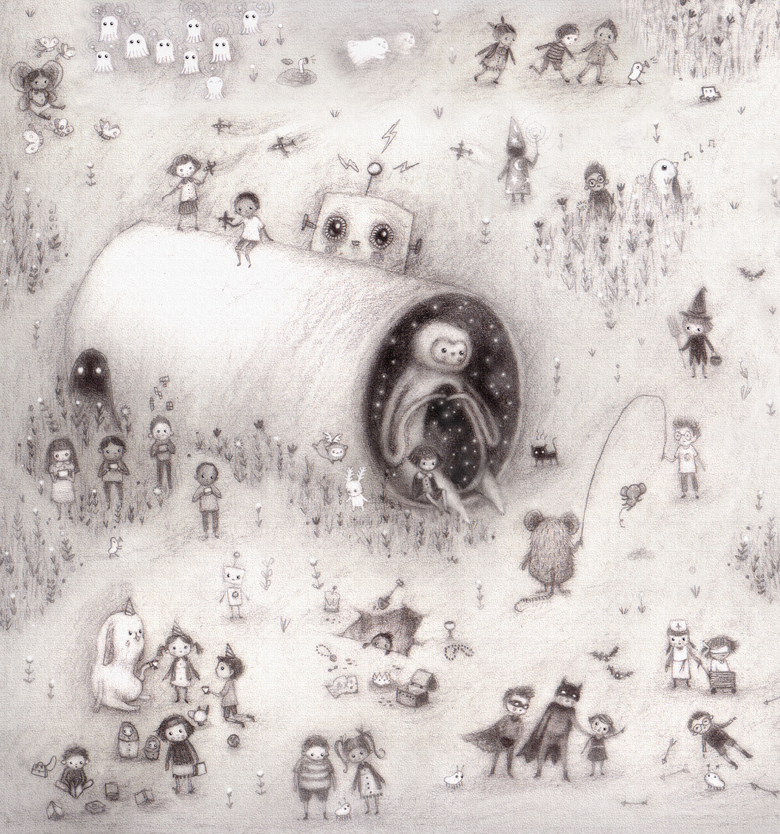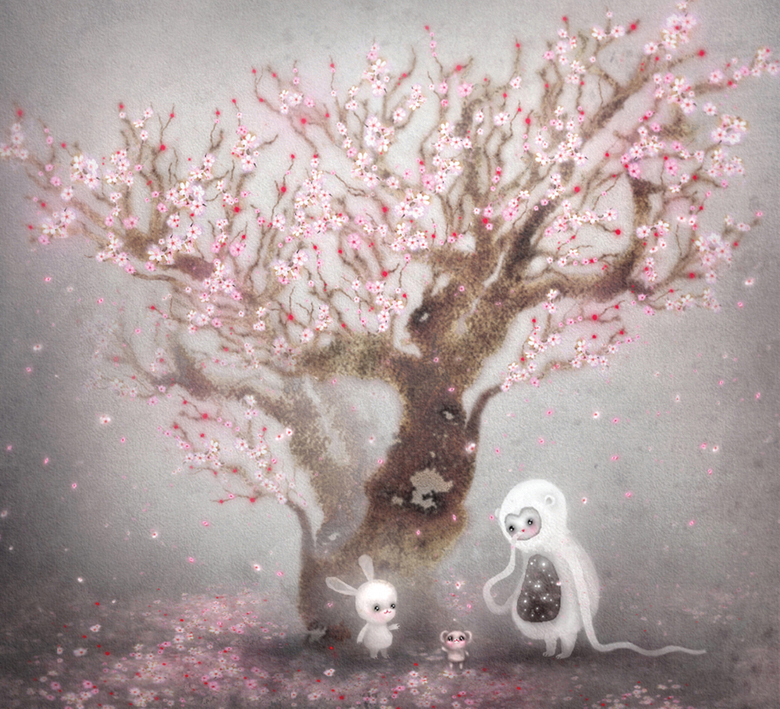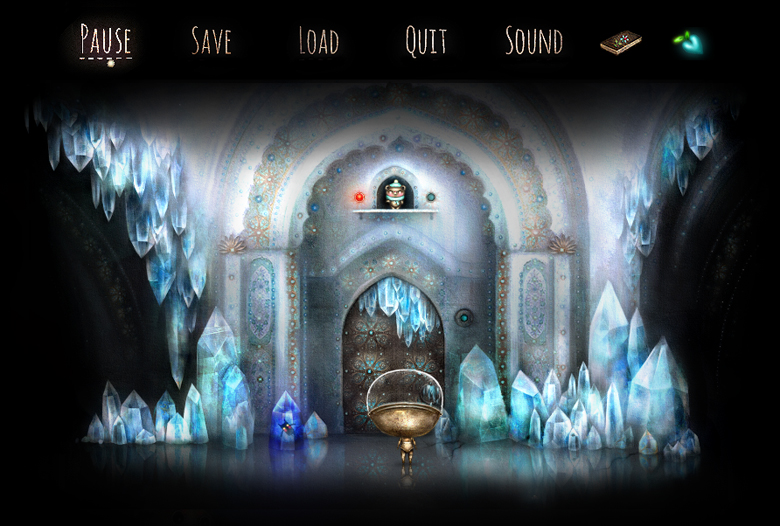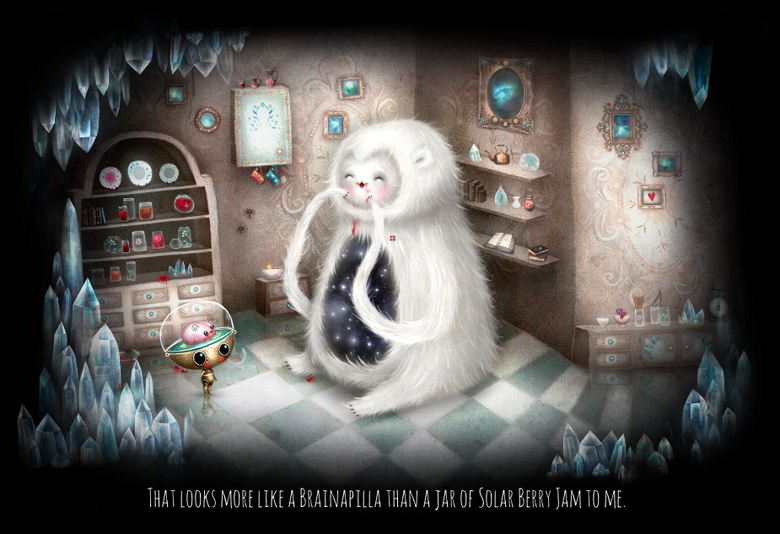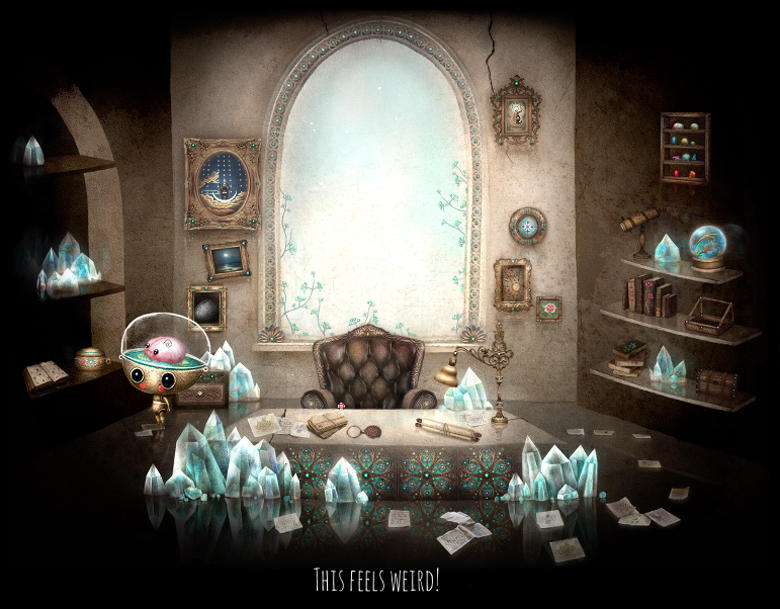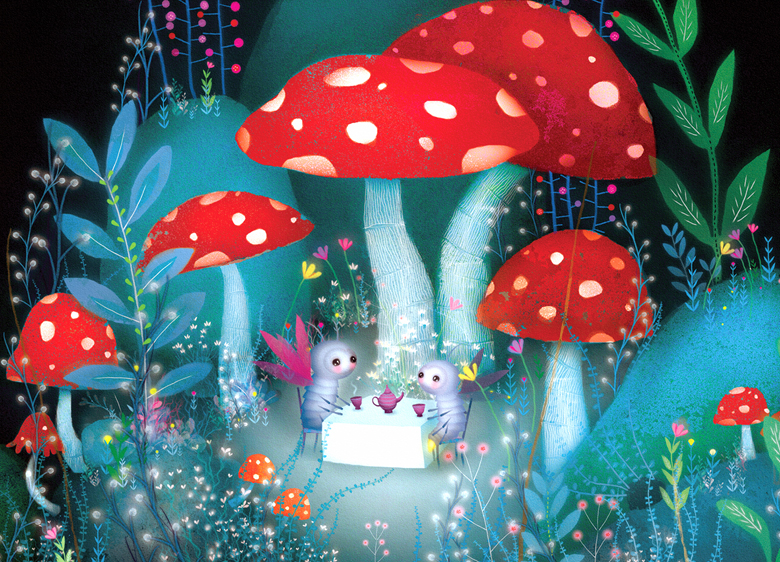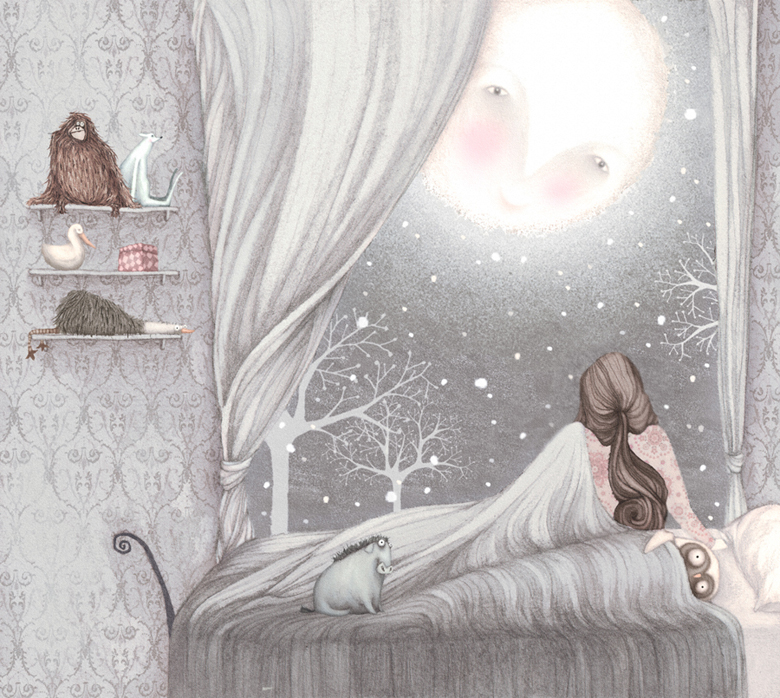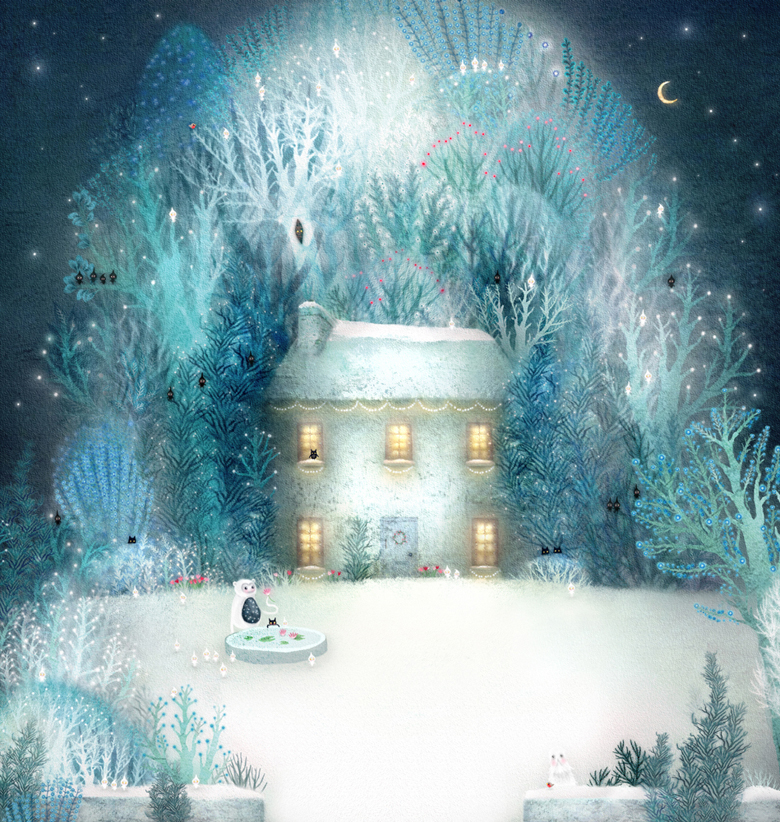
Illustrator spotlight: Lisa Evans
26th November 2014
Lisa Evans is a master of atmospheric illustration; her dreamy worlds make the perfect home for space-yetis and jam enthusiasts. Intrigued? Us too; we caught up with Lisa to talk about illustration, her upcoming game Growbot, and the bridge between art and tech.
Tell us a bit about your illustration process – do you always start on paper?
Yes, although I think I usually start before that with a feeling. I can’t immediately see in my mind what I want to draw, but I know the emotion I want to convey through it. Starting on paper is useful because I can draw it over and over in small thumbnails until it begins to take shape. This my favourite part of the illustration process. After that, I clean up the design and work out the lighting, colour and texture before scanning or photographing the drawing and taking it into Photoshop.
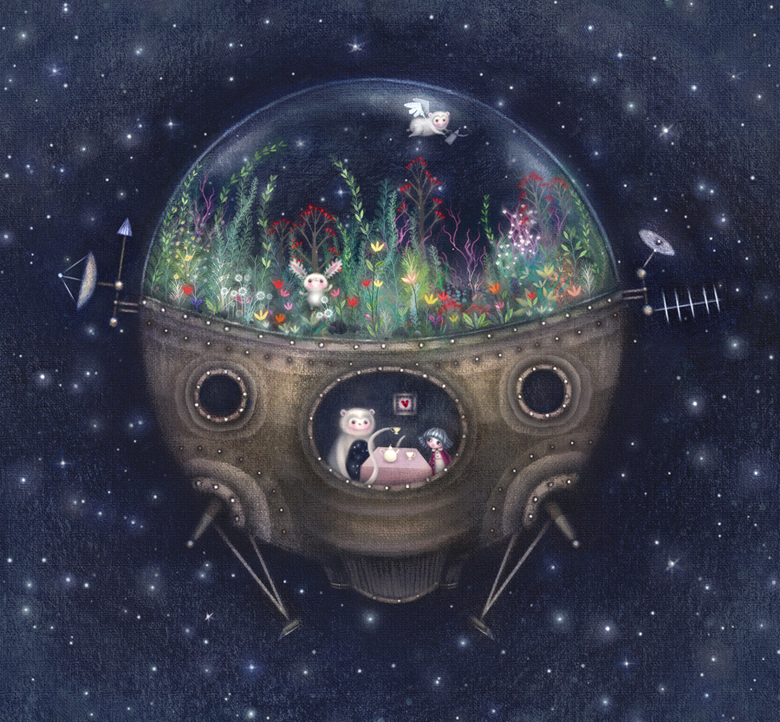
What’s your favourite thing to illustrate?
That’s hard! People are my least favourite thing to illustrate, certainly. I like creating worlds, creatures and atmosphere. My work tends to commonly feature detailed plant life, crystal planets, yetis in sashes, and mystical robots. Often I set these things in space.
A little birdy tells me you’ve also been working on a game. Tell us about that.
I’m working on a point-and-click adventure game called Growbot. It’s about a self-created robot who lives in a greenhouse floating in space, and who is part of a larger mission to terraform an asteroid. The greenhouse comes under attack by an alien crystal and you must explore the station, talk to its other strange residents, and solve simple puzzles to discover what’s happening.
I’ve had a sneak preview and I must say, I’ve never played anything quite like it. The artwork is beautiful. What made you decide to translate your drawings into something interactive? Did it feel like a natural transition to add movement and sound to your characters?
Thank you! I became interested a few years ago in finding ways to bring my work to life, through animation or interaction. It’s thrilling to see my own characters move, and to feel like I can create worlds that can be inhabited as well as viewed.
Bringing those worlds to greater life felt natural, but has required learning a lot of new skills along the way. I’ve experimented with 2D animation and I learnt how to make 3D models, and that eventually led me to learn game making software called Unity. That’s what I’m making Growbot in. It makes it easier to get started with the implementation of game ideas without first having to learn about 3D rendering or a complex programming language, which means I can spend more time creating art and animations and less time beating my head against technical challenges!
You’ve previously dabbled in 3D printing, making models of your characters. Is this something you think you’ll pursue further?
I don’t think it’s something I’ll pursue in the near future. I find 3D printing exciting, and it was lovely to be able to take the models I’d made on a computer and turn them into physical objects. It’s unfortunately also expensive and hard to do at a scale that would make it a viable production method. Perhaps when 3D printers become cheaper and more accessible I’ll buy one of my own!

Lisa hand-paints each 3D model. Love those rosy cheeks!
Do you think technology is changing the way we experience art?
I think technology is a brilliantly powerful tool. It provides us with access to an abundance of art, and that is in many ways a good thing.
However, I think the process of discovery – the way in which we find things – is also important for creativity. I miss the days when I would take trips to my local library to search the shelves and stumble across strange books or new ideas in unintended places. It was more intimate than a Pinterest page, and the method of discovery changed the way I related to the things I found. It certainly changed the value of it; I’d spend far more time poring over books than I do jpgs on my computer screen.
In a world of abundance, everything becomes devalued: the things we see and hear and find are transient because there’s always something else to see just around the corner. It’s both harder to make a living, and easier to find yourself skimming across the surface of an ocean instead of diving deep into any single pool.
What inspires you? Do you actively seek out inspiration for your artwork, or is it something that just happens?
I think art is a way of organising and making sense of yourself and the world around you. I often browse online for new art but inspiration isn’t something I’m consciously aware of, and it tends to come from less obvious places.
I like learning new things, so listen to a lot of podcasts about obscure subjects that have nothing to do with art. But I find that if your mind is messy, creativity seems to happen, almost as an attempt to connect those disparate subjects together and create order from them. I’ll find ideas for pictures or or characters and stories in the most unusual places, as my mind uses them to form bridges between whatever subjects I’ve been learning about.
What projects do you have coming up?
I’m currently working on a children’s book for a publisher in the US and a series of children’s book covers for a publisher here in the UK, both which should be out sometime in the next year. In my own time I’m working on the art for the second chapter of my game Growbot, and also chipping away at an illustration of Kew Gardens inspired by a recent visit and by reading a novel set there called Flower Phantoms.
